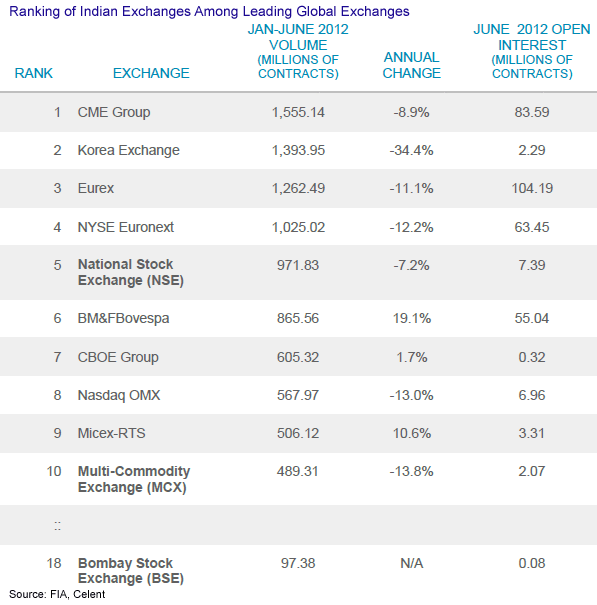Indian Derivatives Markets: Illusions of Competition?
Abstract
The Indian exchange-traded derivatives market has been building on its progress in the last decade or so. New exchanges have come up, and more products are being traded in these centers. It is maturing into a strong global competitor and a viable alternative to leading emerging market exchanges such as those in Brazil, Russia, and China.
In a new report, Indian Derivatives Markets: Illusions of Competition?, Celent examines recent developments in the Indian derivatives market and whether it has been able to create choices for investors when it comes to exchange platforms. It follows on an earlier report, Indian Exchange-Traded Securities: Poised for Further Growth, which analyzed the growing maturity of the Indian markets and the positives that could be taken from the successful introduction of exchange-based currency derivatives trading in the country. The report also found that the liquidity in the equity index derivatives meant that there was a greater preference for these products over individual equity derivatives. These two trends have strengthened over time. Some of the expected developments, such as market-making in futures and options and tighter regulation, have also materialized.

“The Indian exchange-based derivatives market has made excellent progress in the last decade, but there is certainly room for improvement,” says Dr. Anshuman Jaswal, Senior Analyst with Celent’s Securities & Investments Group and author of the report. “From a competitive point of view, the currency derivatives market seems to be the best positioned, followed by the commodity derivatives market. For equity derivatives, BSE has been able to provide an alternative only for a brief period. The entry of MCX-SX should provide some much needed boost to competition in this market in the near future.”
This report begins with a look at the contrasting performances of the National Stock Exchange (NSE) and Bombay Stock Exchange (BSE) for equity derivatives. The progress of the various currency derivatives exchanges is assessed in the next section, including the rather mixed fortunes of the three exchanges. Finally, the report looks at the development of the commodity derivatives market and the two leading national exchanges.
This 24-page report contains 13 figures and one table.

